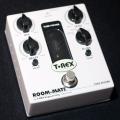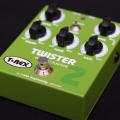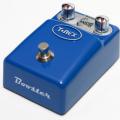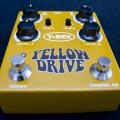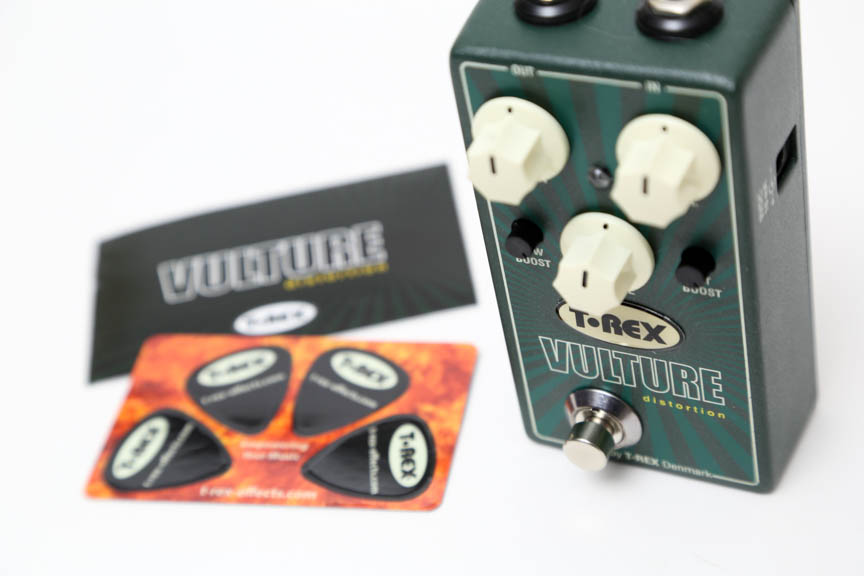 Distortion.. green pedal.. I figured I had it all worked out before I even played it. Just like so many things in life.. I was wrong. The guys at T-Rex sent over the T-Rex Vulture Distortion for me to give a little test ride and to talk about it here. I’m glad they did, I had some fun with this pedal.
Distortion.. green pedal.. I figured I had it all worked out before I even played it. Just like so many things in life.. I was wrong. The guys at T-Rex sent over the T-Rex Vulture Distortion for me to give a little test ride and to talk about it here. I’m glad they did, I had some fun with this pedal.
The controls for the most part are pretty classic – Gain, Tone and Level. But in addition to the classic trinity controls, there is ‘Low Boost’ and ‘Fat Boost’. I thought that was a little interesting. These small trim pots help contour the tone. The Low Boost is designed to go from a *combo* feel to a *stack* vibe. I definitely thought with the lows pumped it gave it a more scooped feel. I think this would be fine – and big – in a single guitar scenario, but could get lost with dual guitars. The ‘Fat Boost’ adjusts the low mids and is designed to emulate some speaker cabs. Personally, I loved it when both the Low Boost and the Fat Boost were cranked and you brighten things up with tone knob. Speaking of the Tone knob, going fully counter clockwise did NOT give the super dark / pure mud tone.. that I normally hate. Basically the entire Tone spectrum provided a really useable tone. The Level knobs gives you a monstrous amounts of level. I was very blown away with the amount of headroom in the pedal.
Here is the official description from T-Rex:
The Vulture started its life, when Michael plugged in one of the very first pedals we made. That pedal had a certain sound to it that we really liked, but it was a bit grungy in the low-end. We wanted to make a pedal with that sound, but with a tighter, less fuzzy low end and with more gain.
We opened up the pedal and painstakingly measured everything in it, to find out why it sounded so good, and found a couple of resistors that would be better with other values.Was it modified earlier in life or was this just a very good sounding mistake from when it was made in Lars´ basement way back in the 90´s?
All we know is that the basic sound was cool and we left it at that, and went on to focus on getting the low-end tight – but BIG!
The fruit of our labor is a pedal that has a great, throaty distortion with a nice bite to it but the low end and low midrange can be shaped in many ways, thanks to the low- and fat-boost knobs. This allows the player to dial in almost stupid amounts of lows, but the distortion stays tight, not muddy.
Â
LOW-BOOST AND FAT-BOOST? ISN´T THAT OVERKILL?Well, we could have left it at a “bassâ€-knob, but that will only get you so far. The low-boost will add a lot of what we all love about those heavy 4×12 cabs, but that is not necessarily what you need if you are looking for more “body†in the sound, although it can turn that small combo you play at jam-nights into something bigger.
The fat-boost is designed to add weight and punch to the sound, giving the top strings a lot of thickness – almost like you went up two steps in string gauge, and the punch is more of a “punch in the chest†than a “kick in the #€%â€.
The secret to the Vulture is to adjust the boost and tone knobs for optimal sound when the gain is adjusted, just like on an amp. It is tempting to turn everything up, but we still remember what happened when we turned the boost knobs off and set the gain above 3 o´clock…â€uhm, maybe I don´t need a two-channel amp afterallâ€.
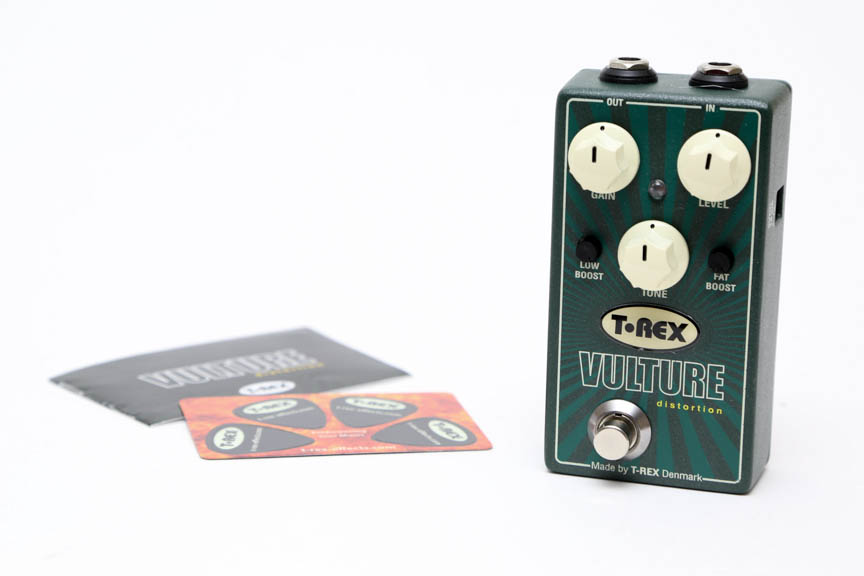 I played this pedal with on clean and with a dirt channel. With light distortion settings on the clean channel, things sounded nice and gritty. With things cranked, the pedal definitely sounded “pedal-ly” if you know what I mean. The scooped mids were very prominent. On high gain channels, the pedal really screams. High end sparkle and control via the Tone knob provided a few great options for searing lead tone. Dial back the Tone and add the Low Boost and/or Fat Boost, and things got nice and chunky for meaty rhythms. I also played this with single coils as well as humbucking pickups, and different hightlights presented themselves. Definitely more highs with the single coil, and the humbuckers provided a bigger mid-bump.
I played this pedal with on clean and with a dirt channel. With light distortion settings on the clean channel, things sounded nice and gritty. With things cranked, the pedal definitely sounded “pedal-ly” if you know what I mean. The scooped mids were very prominent. On high gain channels, the pedal really screams. High end sparkle and control via the Tone knob provided a few great options for searing lead tone. Dial back the Tone and add the Low Boost and/or Fat Boost, and things got nice and chunky for meaty rhythms. I also played this with single coils as well as humbucking pickups, and different hightlights presented themselves. Definitely more highs with the single coil, and the humbuckers provided a bigger mid-bump.
Here is their official pedal demo of the T-Rex Vulture:
The T-Rex Vulture lists at $249, but can be purchased for $199 at Amazon.com!
Overall, the T-Rex Vulture is great sounding distortion pedal with various options to shape your tone. I believe it would be great for lead work or higher-gain rhythm work. Additionally, it would be a great addition to dirty up a clean channel with some nice grit. It plays very well with single coils as well as humbuckers. Ultra-bright LED can be seen from space and is built with the classic T-Rex reliability you’d expect.
Let me know what you think about the T-Rex Vulture by commenting below!

